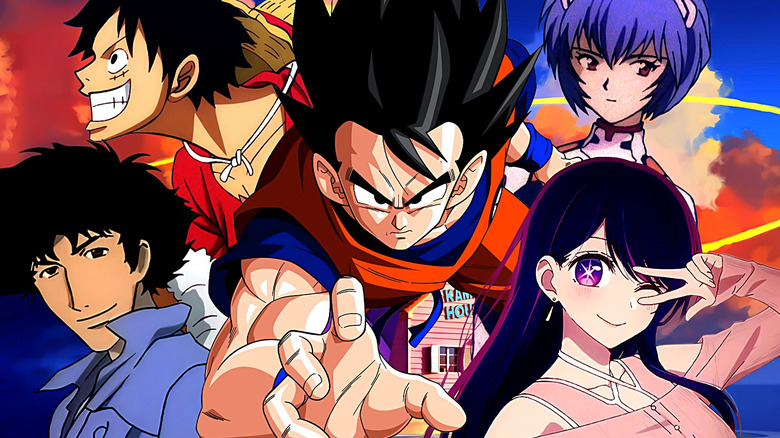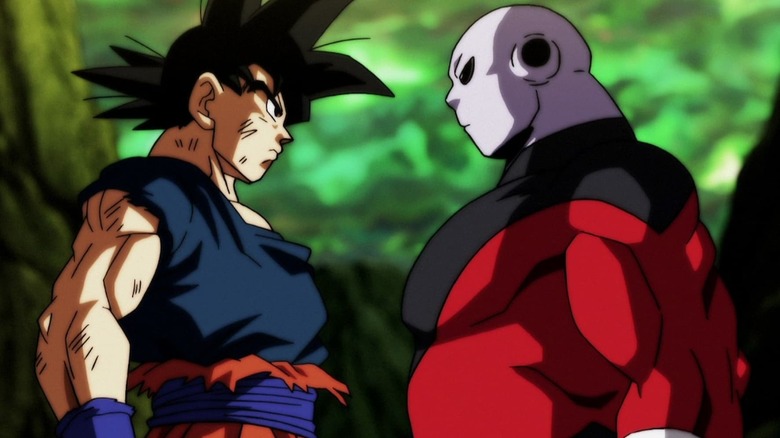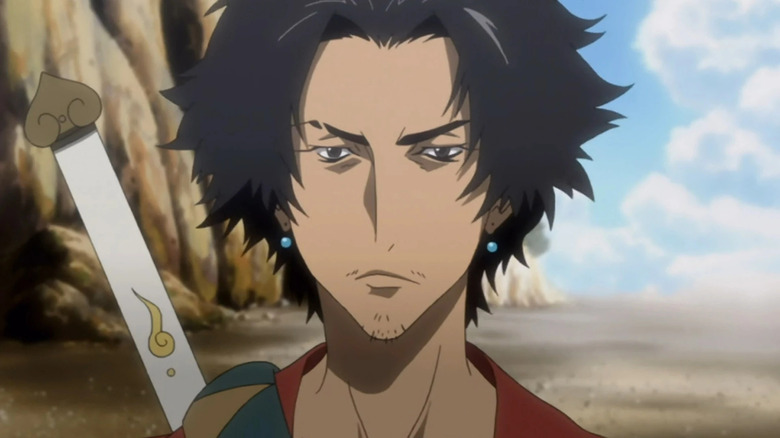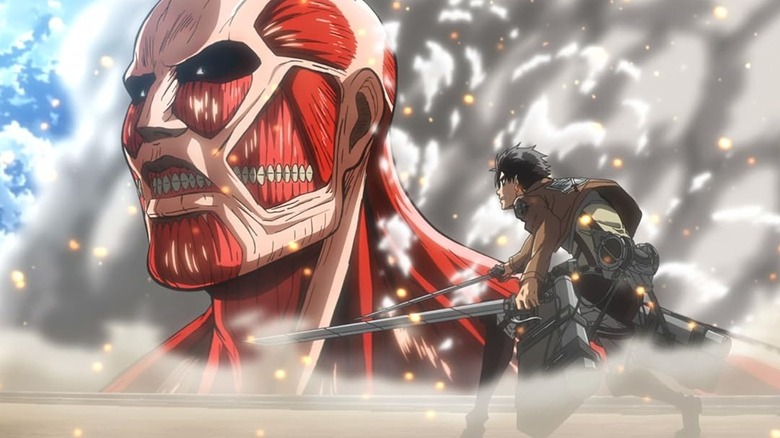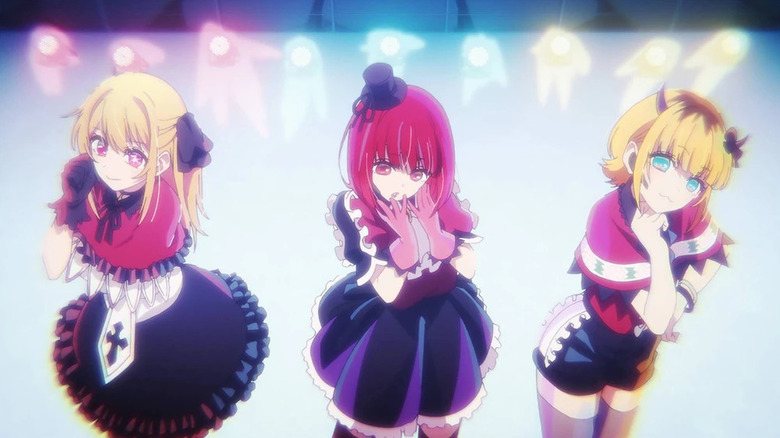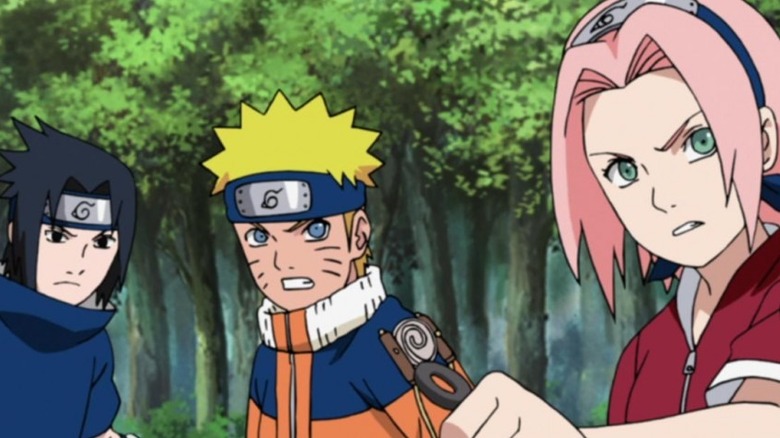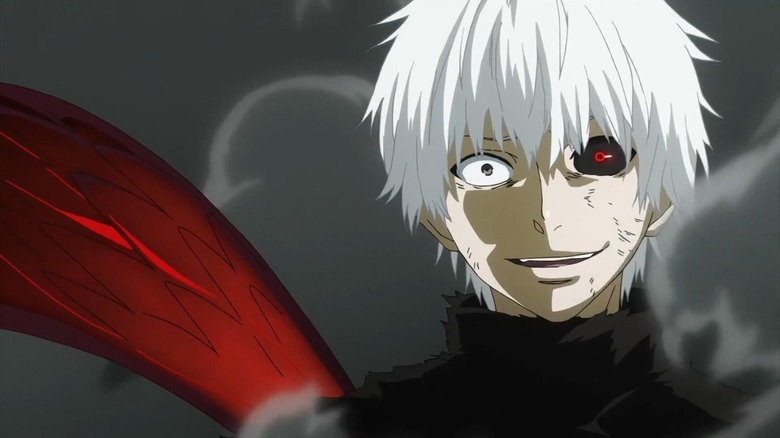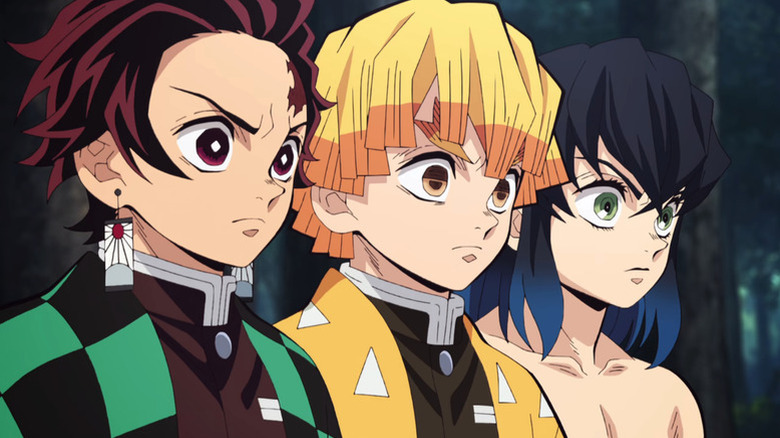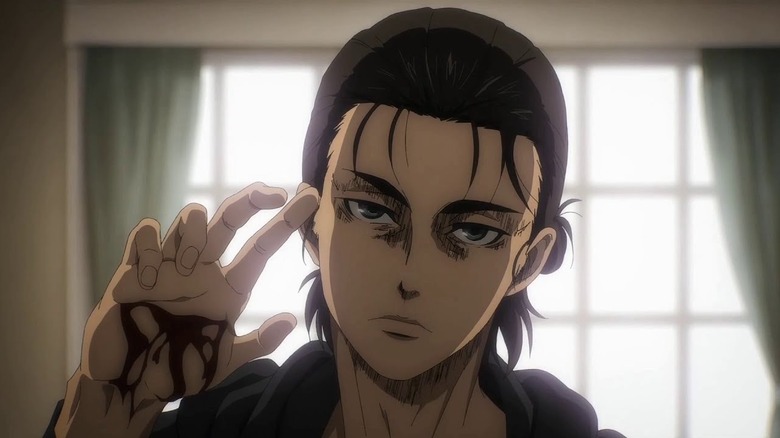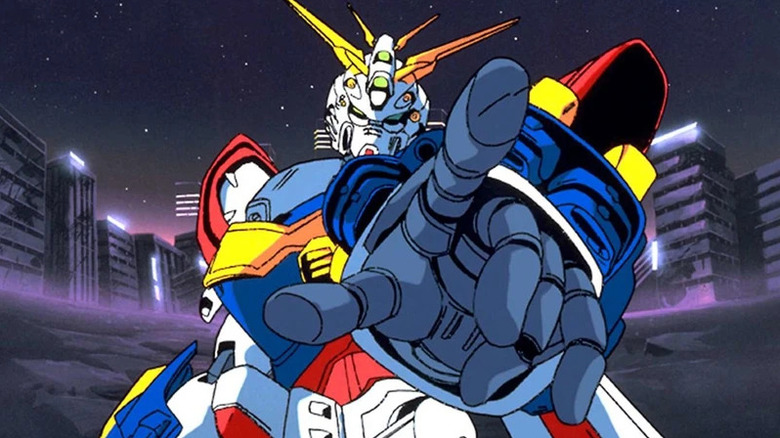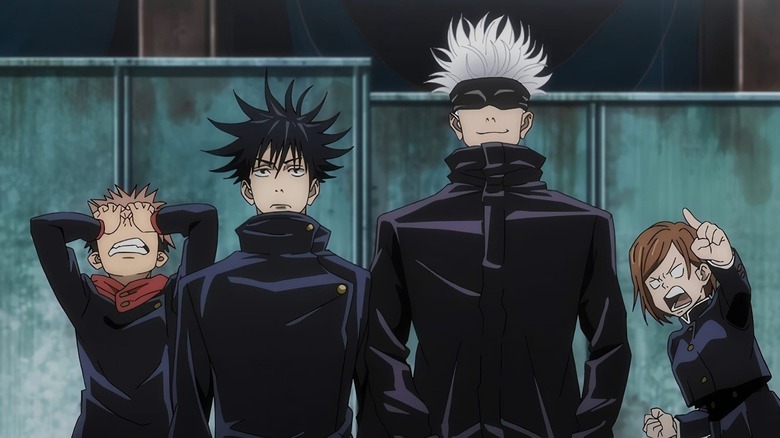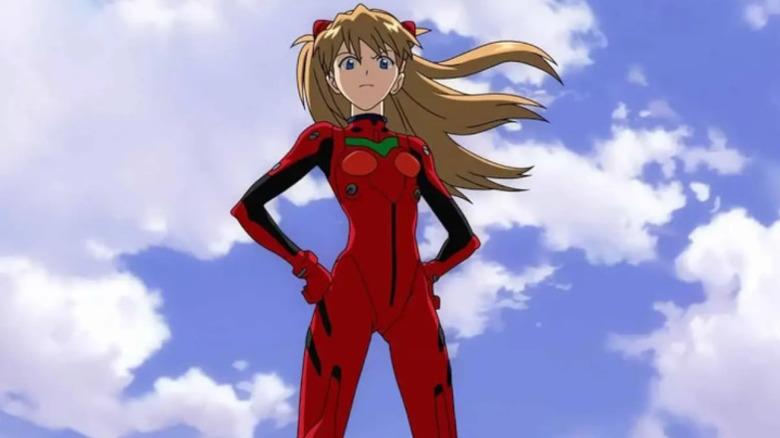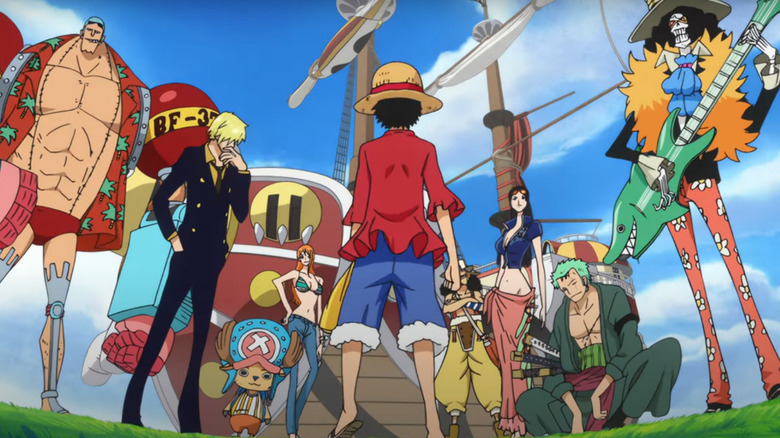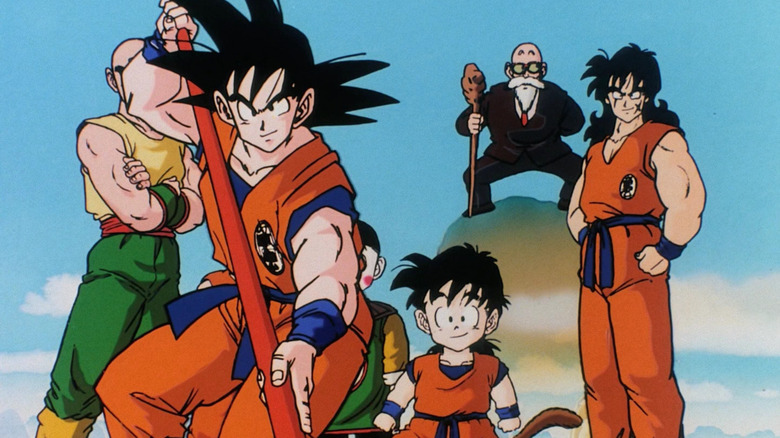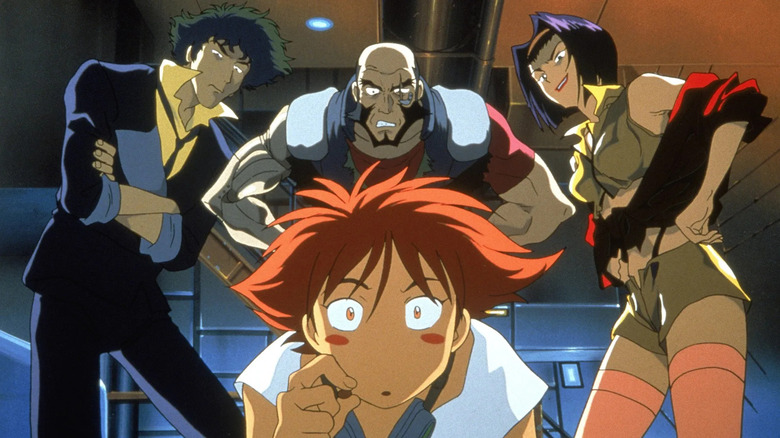15 Best Anime Openings Of All Time, Ranked
Anime has long since become a global powerhouse beyond its native Japan, from its sweeping stories and memorable characters to its tightly crafted animation and art design. In setting their best foot forward, many anime series live and die by the quality of their opening title sequence. Often set to driving pop and/or rock songs by contemporary artists, these stylized openings highlight the main characters and tease the trials and tribulations they're about to face. More recent anime shows change up their openings, sometimes as often as the start of every season.
Anime openings set the tone for the shows that they're attached to, with the best forever leaving their songs imprinted on the respective series. Though the most essential anime series boast fan-favorite openings, many overlooked and shorter shows also have some truly great opening sequences. Here are the 15 best anime openings of all time ranked, sure to get any fan pumped up.
Limit Break x Survivor from Dragon Ball Super
While the original opening to "Dragon Ball Super" ushered in the return of the late Akira Toriyama's epic franchise, its second opening completely blew it out of the water. Titled "Limit Break x Survivor" and performed by Kiyoshi Hikawa, the opening has Goku and Vegeta training diligently for the Tournament of Power to determine the multiverse's fate. The opening then segues into the two joining the other martial artists to face opponents from other universes, including the formidable Jiren. Later revisions of the opening, retaining the same theme, tease Goku's transformation into the virtually unstoppable Ultra Instinct state.
The first opening to "Dragon Ball Super" relied heavily on the nostalgic appeal of reuniting with the franchise's iconic characters. The second and final opening, leaned into the intense training and fighting the franchise was known for, fueled by a propulsive rock melody. Underscoring its fan-favorite status, the song was included in the Tournament of Power stage in the 2024 video game "Dragon Ball Sparking Zero," letting players recreate the bombastic brawls. With the English version performed by Nathan Sharp also maintaining the high energy, "Limit Break x Super" captures the core appeal of "Dragon Ball" in less than two minutes.
Battlecry from Samurai Champloo
Featuring several key creative figures behind the incredible "Cowboy Bebop," the 2004 anime series "Samurai Champloo" maintained the team's strong emphasis on visual and musical style. But whereas "Cowboy Bebop" was heavily influenced by jazz, "Samurai Champloo" took much of its stylistic cues from hip hop. This is evident right from its opening, "Battlecry," an atmospheric lo-fi hip hop song composed by Nujabes, with lyrics provided and performed by Shing02. The sequence showcases series' leads Mugen, Jin, and Fu individually, teasing the differences in each of the main characters' respective demeanors.
"Battlecry" lets audiences know right away that this is going to be a slick samurai story unlike anything else that they've ever seen before. The stylized credits, particularly focusing on Mugen and Jin slashing through any enemies that get in their way, imbues the show with a uniquely cool aesthetic. Fu brings a more innocent energy to the proceedings, but the opening does hint at her providing an ingenue vibe to the story. With "Battlecry" practically crackling like a well-worn hip hop record, "Samurai Champloo" steps up with a clear swagger in its opening.
Guren no Yumiya from Attack on Titan
Based on the manga by Hajime Isayama, the enormously successful anime series "Attack on Titan" came out the gate swinging with an assault from its cannibalistic Titans. This turn of events leads protagonist Eren Yeager to join the battle against the Titans, using a steampunk system to catapult himself into fights versus the ravenous giants. This literally uplifting battlefield tactic informs the show's first opening, set to "Guren no Yumiya" by the symphonic rock band Linked Horizon. The title sequence places viewers in the soldiers' shoes, zipping around the cities as they target the Titans' weak point at the nape of their necks.
Coming off one of the most upsetting deaths in "Attack on Titan," the opening gives the show a more inspirational energy to fight back. despite the long odds. Bombastically operatic, the song captures the series at its most hopeful, before the full cost of its grueling war revealed its total scope. All the characters still have that wide-eyed enthusiasm to them, determined, but not yet cynical from their wartime experiences. "Attack on Titan" featured a number of memorable openings throughout its four-season run, but "Guren no Yumiya" stands out as a rousing call to arms.
Idol from Oshi no Ko
J-pop figures prominently in Aka Akasaka and Mengo Yokoyari's manga series "Oshi no Ko," something that carries over to its 2023 anime adaptation. This is reflected in the show's themes, especially its first season opening, set to "Idol" performed by Yoasobi and written and produced by the pop duo's member Ayase. The opening titles introduce each of the first season's main characters, in the shadow of the story's overarching pop idol Ai Hoshino. These introductions also hint at the contrasting dynamic between twin siblings, Ai's children Aqua and Ruby Hoshino.
For a story that features so much pop music, it would behoove "Oshi no Ko" to have a memorably poppy opening. Fortunately, "Idol" certainly delivers on that promise and stands as one of Yoasobi's most recognizable songs worldwide. The opening also gently evokes the similarly themed "Perfect Blue," teasing something sinister behind the glitz and glamor. Providing an energetic opening, "Idol" invites audiences into the sensory-overloading world of "Oshi no Ko" with style.
Silhouette from Naruto Shippuden
"Naruto" is another one of those cornerstone anime franchises, based on the manga by Masashi Kishimoto. The anime adaptation ran for so long that it was divided into a second series, not unlike "Dragon Ball Z," under the similarly revised title "Naruto Shippuden." This series' 16th opening was set to "Silhouette," performed by the rock band Kana-Boon and written by the band's frontman Maguro Taniguchi. The opening has protagonist Naruto Uzumaki steadily growing up into the ninja warrior he dreamed of, interspersed with imagery from his and his friends' past.
With a saga as extensive as the one in "Naruto," it's great to see the franchise acknowledge its own history. The opening demonstrates how far the adaptation and Naruto had grown since its earliest days, with Naruto both a fierce warrior but still willing to extend a hand in friendship. This is synced seamlessly with Kana-Boon's pop-punk hit, soaring along with its melodic guitar riffs. The "Naruto" franchise's legacy is one that's been around for decades and "Silhouette" takes full advantage of this.
Unravel from Tokyo Ghoul
The supernatural horror manga "Tokyo Ghoul" by Sui Ishida was adapted into an anime series in 2014. The series follows college student Ken Kaneki who is transformed into a half-ghoul, struggling to maintain his humanity while dealing with the ghouls' hunger for human flesh. The opening to the original series is set to "Unravel," written and performed by TK from Ling Tosite Sigure, capturing the sinister nocturnal take on Tokyo. Several main characters are depicted, with psychedelic visuals hinting at the ghouls' predatory organs, the Kagune.
There is a dark edge to "Unravel" that meshes well with the themes and visuals from "Tokyo Ghoul." The characters seen in the opening look normal on the surface, concealing their more fantastical and menacing nature as they do in the story. The colorful visuals swirling around the characters add a vibrancy to perpetual darkness without giving the game away. A blend of pop and hard rock that matches the sensibilities of "Tokyo Ghoul," "Unravel" is a modern classic.
Gurenge from Demon Slayer: Kimetsu no Yaiba
One of the biggest anime franchises of the past several years is "Demon Slayer: Kimetsu no Yaiba," based on the manga by Koyoharu Gotouge. The dark fantasy series follows fledgling swordsman Tanjiro Kamado hunting the demons that attacked his family, infecting his sister Nezuko. Tanjiro and Nezuko's adventures are highlighted in the show's first opening, set to "Gurenge," by the pop artist LiSA, who also wrote the song's lyrics. Tanjiro's brutal training, along with glimpses of his allies and enemies, appear throughout the opening sequence.
LiSA's song meshes well with the dark fantasy elements of "Demon Slayer," especially during the opening's big action beats. But more than just providing a roll call of the show's many characters, the opening constantly returning to Nezuko is a reminder of the story's stakes. And no matter how many times Tanjiro is knocked down, the driven hero picks himself back up and keeps up the fight. That juxtaposition between Tanjiro and Nezuko informs so much of "Demon Slayer" and the show's first opening illustrates that beautifully.
The Rumbling from Attack on Titan
The fourth and final season of "Attack on Titan" switched up animation studios, with MAPPA finishing up the grim steampunk series. Divided into four sets of episodes, the second set opened to "The Rumbling," performed by the Japanese metal band SiM, named for the show's cataclysmic event started by Eren Yeager. The opening shows the world reacting to the ominous development as colossal Titans become approaching their cities en masse. Meanwhile, Eren's transformation from a wide-eyed hero to a villain intent on eradicating humanity is touched on as his old friends rally together to stop him.
"The Rumbling" highlights the dark operatic scope and metal-infused sensibilities that "Attack on Titan" escalated into in its final seasons. The apocalyptic intensity that permeates throughout the final season is beautifully depicted in the opening, particularly that growing sense of hopelessness. This is juxtaposed by the inherent tragedy of what the show's protagonist has become, once humanity's best hope against Titans only to become the behemoths' leader. In setting the stage for the show's final episodes, "The Rumbling" is the best opening from the whole series.
Flying in the Sky from Mobile Fighter G Gundam
Across the entire Gundam franchise, there are so many different openings reflecting its moody anti-war themes. 1994's "Mobile Fighter G Gundam" went in a different direction, given the show's lighter tone. Set to the song "Flying in the Sky," performed by Yoshifumi Ushima, the song showcases the series' Gundams soaring in formation while hinting at the show's fighting tournament. Protagonist Domon Kasshu is then introduced as a lone samurai archetype in the literal shadow of the villainous Master Asia before taking the helm of his Gundam.
In contrast to its bleaker predecessors, "Mobile Fighter G Gundam" focused on the world's nations duking it out in a competitive tournament rather than devastating wars. The show's rocking '90s melody captures that shift from the somber tones Gundam was known for, juxtaposing the lone warrior in Domon with the rousing sight of Gundams in action. Rather than being a strictly musical opening, "G Gundam" incorporated sound effects of the Gundams locking in and blasting off, adding to the hype. "Mobile Fighter G Gundam" was a reinvention of what the franchise could be and its opening declared that this show was going to be more effusively fun than anything before.
KaiKai Kitan from Jujutsu Kaisen
The dark fantasy manga "Jujutsu Kaisen" by Gege Akutami was adapted into a popular anime series which premiered in 2020. The show's first opening was set to "KaiKai Kitan," written and performed by the pop-rock artist Eve. Taking place in a Japan where the heroic Jujutsu Sorcerers battle living curses from the shadows, the opening reveals much of the first season's main cast. As the heroes see a side to Tokyo hidden from plain sight, they prepare for the epic battle to defend the city from supernatural evil.
"KaiKai Kitan" does a great job of showcasing the secret world, including curses, prevalent throughout "Jujutsu Kaisen." The heroic characters each get the spotlight, particularly protagonist Yuji Itadori and the blindfolded Satoru Gojo, looking as smugly cool as ever. Eve's song moves at a bouncy, uptempo pace, keeping things moving briskly along with a brightly energetic melody. "Jujutsu Kaisen" would get darker and lean more into the horrific possibilities of its premise as it advanced, but "KaiKai Kitan" reflects the lighter early days of the story.
Again from Fullmetal Alchemist: Brotherhood
Hiromu Arakawa has the distinction of having his manga series "Fullmetal Alchemist" adapted into widely acclaimed anime by Studio Bones twice. The 2009 adaptation, "Fullmetal Alchemist: Brotherhood" hews more faithfully to the manga source material than its 2003 predecessor and boasts even more impressive animation. "Brotherhood" kicked things off with the opening "Again," written and performed by pop-rock singer Yui, for its first 14 episodes. The sequence recounts how brothers Edward and Alphonse Elric were transformed by an alchemical spell gone wrong while teasing the allies and enemies they'll encounter.
"Fullmetal Alchemist: Brotherhood" is widely regarded as one of the best anime of all time, and "Again" is a beautiful reintroduction for the Elric brothers. The opening also showcases how much the animation had leveled up since the 2003 series, with more detailed character designs and sweeping shots capturing the various landscapes. All the familiar faces from the early episodes of "Fullmetal Alchemist" are back, with the opening capitalizing on reuniting the characters for returning fans. A fresh retelling of Arakawa's story that doesn't ditch what made the original series so great, "Fullmetal Alchemist: Brotherhood" welcomed back new and old fans with "Again."
A Cruel Angel's Thesis from Neon Genesis Evangelion
One of the most influential anime series around is 1995's "Neon Genesis Evangelion," with protagonist Shinji Ikari piloting the Evangelion against beings known as Angels. The show's opening is set to the pop song "A Cruel Angel's Thesis," performed by Yoko Takahashi, with the sequence teasing the sci-fi action. The opening shows several of the main characters, including Shinji, syncing up with their Evangelions, which interfaces directly with their pilots' nervous systems. This is juxtaposed with the Evangelions in action with shots of the characters looking up into a clear sky and shining sun.
"A Cruel Angel's Thesis" is perfectly choreographed and synchronized with the images in the opening sequence, not unlike the pilots syncing with their mechs. Takahashi's performance also expertly captures the timeless appeal of city pop, a Japanese musical genre popular in the '90s. Given the changes that the characters endure throughout the story, the opening depicts them in a more optimistic light. That feeling is elevated by Takahashi's singing, hinting at the poetic saga about to unfold.
We Are! from One Piece
On the air since 1999, "One Piece" is one of the longest-running anime of all time, adapting Eiichiro Oda's swashbuckling pirate saga. The first 47 episodes of the series used the song "We Are!" for its opening, performed by Hiroshi Kitadani. The sequence starts with a brief retelling of the legendary One Piece, a fabled treasure that makes its owner recognized as the King of the Pirates. As the song picks up, protagonist Monkey D. Luffy and his crew of Straw Hat Pirates are highlighted in action as they sail the high seas for the treasure.
Like "One Piece" itself, "We Are!" is one of the most recognizable anime songs in the medium's history and for good reason. The soaring song promises an epic adventure anime to the audience, a promise which it consistently delivers upon. Like "G Gundam," the "One Piece" opening also uses engaging sound effects as each of its heroes leaps into action, establishing their roles in the crew. Capturing the seafaring fun that the series is known for, "We Are!" is a rousing number that informs the exciting spirit that fuels "One Piece."
Cha-La Head-Cha-La from Dragon Ball Z
Across its numerous anime series, the entire "Dragon Ball" franchise has plenty of memorable openings, including the aforementioned "Limit Break x Survivor." But, at the end of the day, there's just no topping "Cha-La Head-Cha-La," the original opening "Dragon Ball Z" performed by Hironobu Kageyama. The opening animation signals the transition of "Dragon Ball" progressing from a fantasy franchise to one more overtly geared towards science fiction. Later versions of the opening double down on this, including nods to the killer androids, along with Vegeta and his time-traveling son Trunks.
Though Kageyama initially found the song's lyrics to be nonsense, his love of the manga series helped fuel his passion in singing the opening theme. The song immediately became synonymous with "DBZ," balancing the anime's penchant for fantastical fights and playful spirit. Kageyama went on to sing subsequent "Dragon Ball" themes, but, by his own admission, none near the ubiquity of "Cha-La Head-Cha-La." "Dragon Ball Z" has gone on to establish a classic anime legacy and the show's original opening is a big part of that foundational appeal.
Tank! from Cowboy Bebop
"Tank!," the jazzy opening to the universally acclaimed anime "Cowboy Bebop," was always going to be somewhere high on this list. Heavily stylized, both the music and art design evoke the jazz-infused opening titles from movies and shows in the '60s, complete with sliding, vibrantly colored card-based images. A completely instrumental theme, the track is composed by Yoko Kanno and performed by Seatbelts, culminating in a staccato saxophone solo provided by Masato Honda. Without giving the show's story away, the opening lets audiences know they're about to witness slick gunplay, fight scenes, and sexy women, all with a distinctly undeniable sense of cool.
While the "Cowboy Bebop" team worked to make every episode feel unique, "Tank!" is the constant that anchors the entire show. No matter how serious or silly things are about to get, the opening is a recurring signal to viewers that they're in for one slickly entertaining ride. It's a theme that's impossible to skip whenever it comes on and those stylized images never diminish in their cool factor. Over 20 years on, "Cowboy Bebop" still holds up as one of the greatest anime ever and "Tank!" is a timeless cornerstone of its enduring quality.
